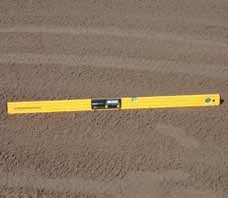The global economic downturn that has impacted the United States the last few years has resulted in many private golf clubs closing or converting to public daily fee. Over the months Dr Karl Danneberger has listened to experts give ideas on maintaining a successful private club in the current economic environment.
As background, a private club in the United States may vary from those in other parts of the world. A private club is often comprised of different types of members. One membership group is known as Social. These members join for the amenities of the club like the dining facility, pool, tennis court, etc. Social membership does not include golf or allows for as a limited number of golf rounds. The Golf membership includes all the benefits of the club plus playing privilege. Membership can be further divided into each category based on individual or family membership. The fee structure varies depending on the level and dues vary widely depending on the club.
Although conducted as a scientific survey, below are some of the common points
shared.
Strive for a world class practice facility:
Members have less time to play golf, due to professional and family obligations. However, quality practice facilities help attract and retain members because they do have time to come out and practice for short period of times.
Short game practice facility:
These are compressed short practice facilities where members can practice chip shots, short wedge and bunker shots, and putting. Short game facilities attract all types of
players including women, juniors, seniors, and members in general.
A health and fitness centre:
Increasingly potential members look at fitness facilities as a priority above the traditional offerings.
Childcare/Kids Club:
Members with young children increasingly are looking for facilities that not only have active junior golf programs, but also cater to children's and thus parent's
interests.
Tournament pin placement: Rule of thumb?

Currently, the United States Golf Association for determining hole location start by following this general rule. For green speeds of 10.5 feet the allowable slope is less than 3.5%. For green speeds greater than 12, the allowable slope is less
than 3.0%. Additional adjustments my be made based on conditions and testing the location with a few test putts. A common tool used to determine slope around a hole placement is a builder's digital leveler.
